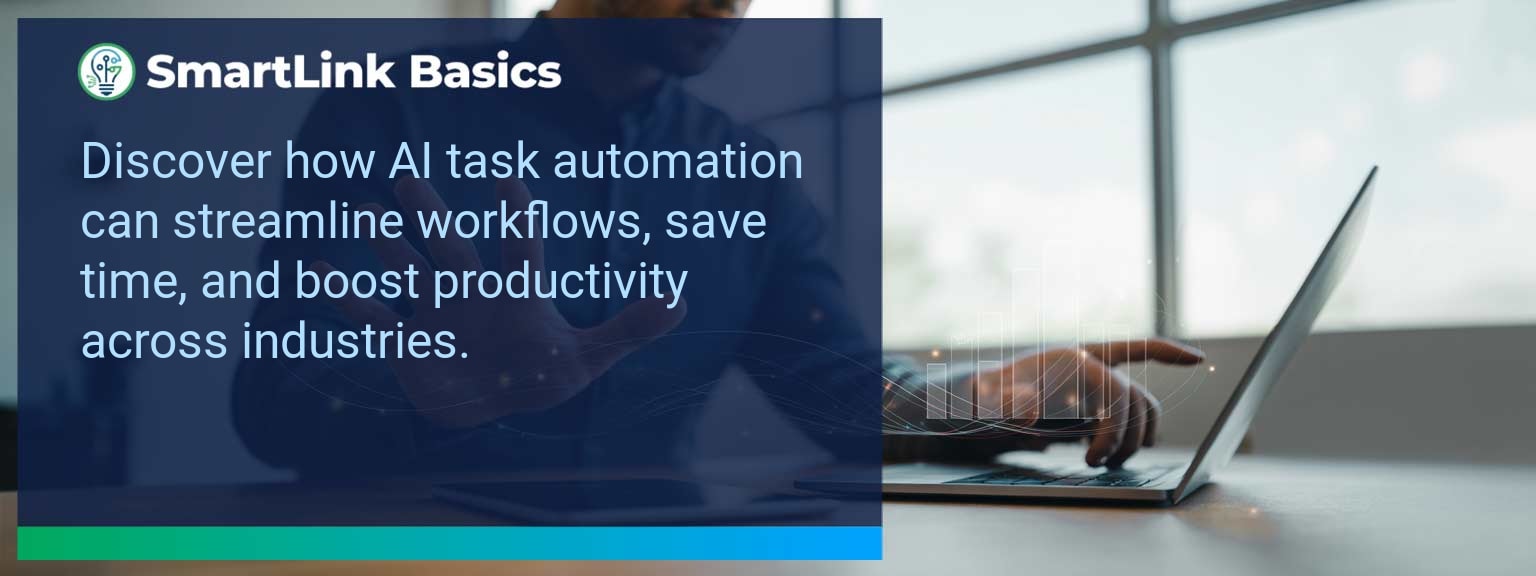In high-performance sales organizations, the difference between growth and stagnation often lies in how efficiently teams handle routine tasks. Research by McKinsey shows that up to 45% of activities people are paid to do can be automated using existing technology. At SmartLink Basics, we see AI task automation as no longer optional—it’s foundational for competitive advantage. For sales leaders, the real opportunity is not just in time saved but in how automation redefines strategic execution. This article explains where inefficiencies hide, how to apply AI to eliminate them, and how to measure the results so you can scale productivity without scaling headcount. You’ll learn frameworks and metrics used by top performers already achieving measurable gains through AI workflow automation.
- Pinpoint workflow inefficiencies limiting revenue performance
- Deploy AI tools to automate repetitive, rule-based tasks
- Redefine team roles to focus on high-value customer interactions
- Track productivity gains with clear leading and lagging metrics
- Scale AI-driven automation across revenue functions strategically
Identifying Inefficiencies In Traditional Workflow Processes
Every sales operation has friction points: manual data entry, status updates, meeting scheduling, and pipeline maintenance. These activities, while necessary, consume hours every week with little direct impact on closing business. In traditional workflows, these inefficiencies compound into slower deal velocity and higher operating costs. An example: A mid-market SaaS sales team spending 8 hours each week per rep on CRM updates and follow-ups. That’s the equivalent of one full sales day lost per week. Over a quarter, this translates into dozens of missed customer engagement opportunities. Actionable insight: Conduct a rapid audit of your team’s weekly routines and quantify the time invested in repetitive, non-revenue-generating actions. This baseline becomes the blueprint for targeted automation.Leveraging AI Task Automation To Redesign The Revenue Operating System
Redesigning processes through AI task automation requires a deliberate framework that aligns tools with revenue priorities. Key levers include: ICP, Segmentation, and Targeting: AI can refine targeting models by analyzing historical conversion data to prioritize high-value prospects automatically. Pipeline Architecture: Automated deal scoring ensures reps focus on the opportunities with the greatest likelihood of closing, reducing wasted cycles. Plays and Messaging: Tools like machine learning automation can personalize outreach sequences at scale, increasing engagement without extra manual input. Operating Cadence: AI-driven scheduling and reporting maintain consistency without the admin overhead, freeing leaders to coach instead of compile reports. Actionable insight: Map current revenue workflows against these four levers. Deploy pilots in one domain first to validate impact before full integration.Leveraging AI To Automate Repetitive Tasks
AI excels at high-frequency, rules-based activities where speed and accuracy matter. For sales teams, this covers lead enrichment, email follow-ups, meeting reminders, and forecast updates. Business process automation platforms can process these in seconds compared to manual methods. One example: A B2B sales team using automated task management saw lead follow-up time drop from 48 hours to under 6 hours, resulting in a 22% lift in conversion rate. Actionable insight: Select three repetitive tasks per role and implement AI workflow automation tools to handle them, redirecting freed-up time toward active customer engagement.Measuring The Impact On Productivity And Efficiency
Without measurement, automation success claims remain anecdotal. Tracking the right metrics proves impact and supports further investment. Leading metrics like time-to-contact and active selling hours showcase early gains, while lagging metrics such as quota attainment confirm long-term benefits. Example: A sales leadership team implemented weekly AI-driven call prep. Within two quarters, average deal cycle time decreased by 14 days. Actionable insight: Build a metrics dashboard integrating your CRM and AI task automation data. This ensures you have a continuous feedback loop to refine both tools and process.Metrics That Matter
| Category | Metric | Definition | Target |
|---|---|---|---|
| Leading | Time-to-Contact | Time from lead entry to first contact | Under 2 hours |
| Lagging | Quota Attainment | % of reps hitting or exceeding target | 85%+ |
| Quality | Data Accuracy | Percentage of CRM records error-free | 98%+ |
Future Potential Of AI In Workflow Automation
The trajectory of AI task automation points toward fully adaptive systems that not only execute tasks but suggest strategic pivots based on market patterns. As machine learning models mature, expect predictive recommendations for pricing, territory allocation, and messaging. A practical example: AI integrating competitive intelligence into sales playbooks in real-time during active deals. Actionable insight: Position your organization now with flexible tech stacks so future AI capabilities can plug in without lengthy overhauls. Leverage expert insights from SmartLink Basics to guide these decisions. <Get the 90-day plan, coaching rubric, and dashboard template to operationalize AI in your enablement program.









